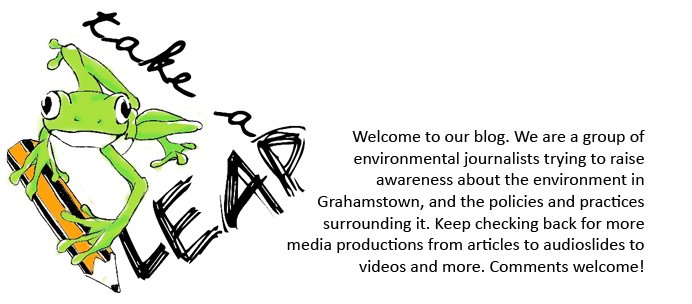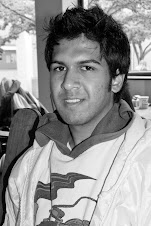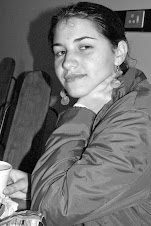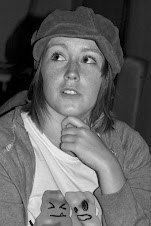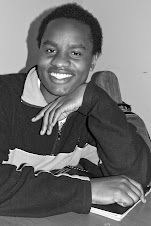By: Jessica Blase
Global warming and the melting of the ice caps seem like they’ll never affect us, but we could be facing problems of our own. The Makana district which covers Grahamstown, Alicedale and other surrounding areas has a substantial amount of its own environmental problems. Parts of our town are scattered with litter, and there is illegal dumping on street corners and in our rivers. Waste is a major issue as it not being properly regulated as while parts of Grahamstown remain spotless, other parts are left to suffer. There is also grave concern by many residents over access to fresh water as well as the water quality in Grahamstown.
But whose responsibility is it to make sure these problems are eradicated. Most people would argue the Makana Municipality! Well this was what I believed. Placing the blame on the municipality is something we all do quite easily, especially when it comes to the issue of waste and litter in Grahamstown. In a recent interview with Johan Esterhuizen, Assistant Director of Environmental Health and Cleansing, one of the only informed people within the municipality on such issues, this perception of mine was changed. I went in with a strong mind, hoping to address this man with the unacceptable issues of illegal dumping and pollution in some areas of Grahamstown. I came out being awoken to a few explanations from the other side.
Where does Makana’s environmental action start? Well in 2005 Makana set up LEAP (Local Environmental Action Plan) which is at first glance an impressive project, its aim being “towards a vision for the environment of Makana”. After consultation, planning and reviews, the LEAP is now in the implementation phase, well it is at least supposed to be. Don’t feel embarrassed if you have not heard of the project as many residents have not- this being one of its many problems. Even though LEAP is a step in the right direction in local environmental conservation the problem is in the implementation as much of the policy seems to remain just that-policy. ‘It’s just a thick document with ideas, but we need funding for all these things to really happen”, says Esterhuizen.
Even though these plans are often not put into action, Esterhuizen argues that some of the responsibility should fall to the people. “It’s not the municipality’s fault that the streets are dirty, it’s you and me who are the problem”, he says. According to Esterhuizen the municipality has two roles. Firstly they must collect domestic refuse, and secondly that council should provide an area for citizens to dispose of larger waste. This he says is being done, and anything above and beyond this is extra work for them. The litter we see on the road, or the large illegal dump sites was put there by the people, was caused by the people, and they should try taking some responsibility for it.
As much as this is a valid argument, what Esterhuizen is forgetting is the fact that people hardly have the means to get to these designated spots. There is also the problem that people have not been educated as to what illegal dumping is, as well as what the health and safety risks are to this. A recent occurrence opened my mind to the discrepancy in the hierarchy of needs here in Grahamstown. In my efforts to find out about the publics environmental concerns, I spoke to a number of people at Checkers . “What are your greatest environmental concerns”, I ask. The stunned, slightly confused face stares at me and shakes her head before turning around. I try again, “Do you have any problems with your electricity or waste? We are trying to show the municipality your concerns!”, I say. A few seconds pass but this time she responds, “I don’t have electricity mam”. “Oh”, I say, slightly blushing, and ashamed of my naive assumptions.
There are people living in Grahamstown who have greater issues than water quality, because for them fresh water would be a luxury. It really makes you think, that those of us who have the ability and the knowledge to do something about this, really should. There is a dire need for education, both in the hands of the municipality staff and the local public. Yes we can continue blaming the municipality and they can continue blaming us but the reality is that nothing will change. As much as people have the right to a healthy environment, alongside this comes the personal responsibility to keep it clean. Those of us with the ability and the education to do so, should.
Thursday, October 23, 2008
Wednesday, October 22, 2008
Educational poster
Maybe a Change
Chenje (1998) said, “People need alternatives to ecologically destructive development practices. All these call for innovative communication skills to which we, as environmental journalists, can contribute.” The Egazini exhibition, held in Extension 6 on Monday, has never bought those words more home to me. We explained our aims and visions to members of a community more severely affected by poor waste management, littering, lack of sanitation, water and electricity issues than most of the Grahamstown public, and more then we will ever experience as middle class and highly privileged students. We played them the audio slides and television outputs produced by our photography, television and radio members of our group. And then we waited, nervous, unsure and slightly anxious about the language barrier as the sound of crunching chips filled the echoing room. One of the men stood up at last. He spoke about the terrible rubbish problems in the community and how sick he feels from the smell when he walks to work, raising concerns about the children who pass the same area. The ball was rolling, the people started talking and the response we got finally showed in practice the role that journalists can play in the community.
Once everyone had agreed that the municipality needs to take a more active role in environmental issues, the members of Extension 6 turned to each other, remarking that it was high time they start to take responsibility for their environment as well. They spoke about how they need to teach themselves and those around them to put their rubbish in the dustbin and the importance of keeping their streets clean. When one individual claimed that they need to stop pointing fingers at the municipality, and start pointing them at themselves, we all exchanged relieved and proud looks.
Bongani, the man who runs the Egazini Community Centre, thanked us for creating the space for the community to reflect on such issues. He also proposed the notion that there are more events where the community can come together and reflect on issues so that they can come up with solutions, instead of waiting for the municipality to sort them out, as well as a mass clean up drive.
After a long semester, filled with hard work, planning and ideas as well as incrediable team work, the experience at Egazini showed what it means to be a journalist. If two people walked away from that, conscious of putting their rubbish in the dustbin then we helped facilitate some sort of change. It is very easy to criticise the municipality from far, but if we are going to start looking after our environment and ourselves, inhibiting the rapid declining state of our world, then we need to start making some changes now. Our media production seemed to generate that idea for a few people and thus, it seems we served our purpose.
Once everyone had agreed that the municipality needs to take a more active role in environmental issues, the members of Extension 6 turned to each other, remarking that it was high time they start to take responsibility for their environment as well. They spoke about how they need to teach themselves and those around them to put their rubbish in the dustbin and the importance of keeping their streets clean. When one individual claimed that they need to stop pointing fingers at the municipality, and start pointing them at themselves, we all exchanged relieved and proud looks.
Bongani, the man who runs the Egazini Community Centre, thanked us for creating the space for the community to reflect on such issues. He also proposed the notion that there are more events where the community can come together and reflect on issues so that they can come up with solutions, instead of waiting for the municipality to sort them out, as well as a mass clean up drive.
After a long semester, filled with hard work, planning and ideas as well as incrediable team work, the experience at Egazini showed what it means to be a journalist. If two people walked away from that, conscious of putting their rubbish in the dustbin then we helped facilitate some sort of change. It is very easy to criticise the municipality from far, but if we are going to start looking after our environment and ourselves, inhibiting the rapid declining state of our world, then we need to start making some changes now. Our media production seemed to generate that idea for a few people and thus, it seems we served our purpose.
Tuesday, October 21, 2008
At the end of it all...
I didn't think it would ever arrive, but here we are with only our final exhibtion and what I think is a very successful media campaign behind us.
Perhaps the highlights of our media production, for me at least, have been our attempts to engage with ideas of public journalism. Our graffiti-style banner encouraged people to personally voice their concerns about their local environment, in their own words, in their own style and I think the result was a very powerful collective community voice with very real community problems.
Our multimedia exhibition at the Egazini Community Centre, in Extension Six of Joza, was also a kind of public journalism, as we used our more visual media productions to stimulate debate around the issues of waste, water and sanitation. What followed was a very heated debate, again really allowing people to address their concerns on their own terms without a 'professional' journalist dictating the angle of the story. Our role was quite simply to stimulate and then provide a platform for much needed debate about the Municipality's shortcomings and successes. I think that this worked extremely well, particularly since it gave us useful footage to send to the municipality in order for them to be forced to be held accountable for their citizens.
Indeed, one of our most important aims throughout this campaign has been to avoid creating journalism in a vacuum and ensuring that our media production had some meaning outside of the AMM. It was for this reason that our WEPD group has worked hard to get our stories published in various local newspapers as well as distributing our very eye-catching educational posters and our eye-catching banner. In this regard, then, I think we have done well.
It is perhaps too soon to tell just how much of an impact our work will have. Our TV crew's PSA on illegal dumping has been accepted by the municipality to use for educational purposes, which is important for us, as a group who throughout our campaign have not only wanted to investigate the municipality's policy implementation, but also to work alongside them and help them to achieve their environmental objectives to some extent. Our educational posters have been placed around Grahamstown and hopefully, with time, they will at least educate a few people about LEAP and what it is all about. However, we do not assume that our media will have a 'magic bullet' or 'hypodermic needle' effect and magically revolutionise Grahamstown; it will take time and much more effort from those following us.
Our public journalism, however, I think has created an important spark in the Joza community. Not only did it get people thinking about what they weren't getting and what they deserved, it also generated discussion around individual initiatives to fix the problems which the municipality could not seem to get to. This was extremely rewarding for me. It seems as if our media has made some kind of difference - even if the municipality does not take notice (which, to be honest, they have been very prone to do in the past), at least we have encouraged people to pick up their own litter and create their own solutions to their problems.
I didn't think I would ever say it, after weeks spent chasing the ever-evasive municipality and endless hours of brainstorming, but I have really and thoroughly enjoyed being a part of Take A LEAP and creating media that didn't end up in the back of the lecturer's desk drawer and learning about different approaches to being a socially responsible journalist.
Take a LEAP. get to know your municipality and jump right into the work that we have done - I think it will be worth it.
Perhaps the highlights of our media production, for me at least, have been our attempts to engage with ideas of public journalism. Our graffiti-style banner encouraged people to personally voice their concerns about their local environment, in their own words, in their own style and I think the result was a very powerful collective community voice with very real community problems.
Our multimedia exhibition at the Egazini Community Centre, in Extension Six of Joza, was also a kind of public journalism, as we used our more visual media productions to stimulate debate around the issues of waste, water and sanitation. What followed was a very heated debate, again really allowing people to address their concerns on their own terms without a 'professional' journalist dictating the angle of the story. Our role was quite simply to stimulate and then provide a platform for much needed debate about the Municipality's shortcomings and successes. I think that this worked extremely well, particularly since it gave us useful footage to send to the municipality in order for them to be forced to be held accountable for their citizens.
Indeed, one of our most important aims throughout this campaign has been to avoid creating journalism in a vacuum and ensuring that our media production had some meaning outside of the AMM. It was for this reason that our WEPD group has worked hard to get our stories published in various local newspapers as well as distributing our very eye-catching educational posters and our eye-catching banner. In this regard, then, I think we have done well.
It is perhaps too soon to tell just how much of an impact our work will have. Our TV crew's PSA on illegal dumping has been accepted by the municipality to use for educational purposes, which is important for us, as a group who throughout our campaign have not only wanted to investigate the municipality's policy implementation, but also to work alongside them and help them to achieve their environmental objectives to some extent. Our educational posters have been placed around Grahamstown and hopefully, with time, they will at least educate a few people about LEAP and what it is all about. However, we do not assume that our media will have a 'magic bullet' or 'hypodermic needle' effect and magically revolutionise Grahamstown; it will take time and much more effort from those following us.
Our public journalism, however, I think has created an important spark in the Joza community. Not only did it get people thinking about what they weren't getting and what they deserved, it also generated discussion around individual initiatives to fix the problems which the municipality could not seem to get to. This was extremely rewarding for me. It seems as if our media has made some kind of difference - even if the municipality does not take notice (which, to be honest, they have been very prone to do in the past), at least we have encouraged people to pick up their own litter and create their own solutions to their problems.
I didn't think I would ever say it, after weeks spent chasing the ever-evasive municipality and endless hours of brainstorming, but I have really and thoroughly enjoyed being a part of Take A LEAP and creating media that didn't end up in the back of the lecturer's desk drawer and learning about different approaches to being a socially responsible journalist.
Take a LEAP. get to know your municipality and jump right into the work that we have done - I think it will be worth it.
Environmental exhibition sparks heated debate
by Cairen Harry and Tammy Sutherns
Grahamstown community members gathered in the Egazini Community Centre in Joza’s Extension 6 on Monday 20 October to take part in a multimedia exhibition and discussion on environmental issues in the Makana area. The exhibition, entitled “Take a LEAP, get to know your municipality”, was held by Rhodes University third year Journalism students as part of a wider campaign to raise awareness about Makana Municipality’s Local Environmental Action Plan (LEAP).
LEAP was created by the municipality in 2005 in an effort to align the municipality with national environmental policies for sustainable development. However, the implementation of these policies has been slowed down by numerous obstacles, leaving many of Grahamstown’s citizens outraged about continuing problems with waste, water, sanitation and electricity.
The ‘Take a LEAP’ exhibition focused on these and other environmental concerns with the screening of four short documentaries and the display of a graffiti banner and educational posters about the local environment. Two of the documentaries were television segments on litter and waste management in Grahamstown and the other two were audio-visual slides dealing with problems of waste disposal and the bucket toilet system in certain parts of Joza. According to the ‘Take a LEAP’ group, their aim was to encourage debate and discussion in response to their media in order to find out more about people’s environmental concerns as well as make them aware of the municipality’s aims and efforts.
Radio journalist Monique Senekal opened the exhibition by addressing the community and explaining the Take a LEAP campaign. “We are here to show you what we have produced and educate you on the Makana Environmental Policies. We want people to be aware of what the municipality is doing and to really investigate whether they are doing enough for our environment,” she said.
The discussion following the exhibition became quite heated as the community members responded to the presentation by both addressing the municipality as well as their neighbours. Various members of the audience complained that the municipality was not doing enough for the environment, with a general consensus that litter and waste management are huge problems in Joza. One community member spoke about the problems with medical waste, having found his children playing with needles that had not been properly disposed of by local medical centres, while another, Ntombozuko Tiniso, complained about the state of the township roads. “It is high time the municipality do tar in our area. The taxis that drive past are affecting our health,” she said.
However, many of the community members felt that the problem came from the residents themselves. “We all understand the problem of litter, but it starts with the individual at home,” said Extension 6 resident Linga Diko. Another resident, Ayabona Mnqanqeni, agreed. “It is high time we all start to feel responsible for the rubbish in the corners of the street,” he said.
Rhodes University Journalism lecturer Rod Amner, who was present for the discussion, proposed the use of innovative projects in Grahamstown that could aid waste management and the litter problems that are increasingly affecting the community, such as rewards for litter collection which was well received by several members of the audience.
While there is evidently a need for Municipality to address the concerns of the community, Bongani Diko, who runs the Egazini Community Centre concluded the discussion by saying that the community “need to stop pointing fingers and need to come together and learn from each other.” He added that the Egazini centre, which provides a space for local residents to create drama, poetry, dance and visual arts, is an important space for members to come together and reflect on community environmental issues. “There is a lot that we can all do as individuals. I’d like to open more arms, whenever we have something we need to reflect,” he said.
The resident’s concerns will be sent as television footage to the municipality.
The Take a LEAP campaign in part of a third year multimedia group project created to generate media production in terms of local environmental policies, utilizing the students’ skills of writing, radio, photography, design and television. The media produced for the campaign included educational posters to raise awareness about municipality policies and citizens’ rights, a banner where the public could write down their problems and give feedback about their concerns about waste, water and electricity as well as written pieces, audiovisual slides and television broadcasts generating stories around such environmental issues.
Grahamstown community members gathered in the Egazini Community Centre in Joza’s Extension 6 on Monday 20 October to take part in a multimedia exhibition and discussion on environmental issues in the Makana area. The exhibition, entitled “Take a LEAP, get to know your municipality”, was held by Rhodes University third year Journalism students as part of a wider campaign to raise awareness about Makana Municipality’s Local Environmental Action Plan (LEAP).
LEAP was created by the municipality in 2005 in an effort to align the municipality with national environmental policies for sustainable development. However, the implementation of these policies has been slowed down by numerous obstacles, leaving many of Grahamstown’s citizens outraged about continuing problems with waste, water, sanitation and electricity.
The ‘Take a LEAP’ exhibition focused on these and other environmental concerns with the screening of four short documentaries and the display of a graffiti banner and educational posters about the local environment. Two of the documentaries were television segments on litter and waste management in Grahamstown and the other two were audio-visual slides dealing with problems of waste disposal and the bucket toilet system in certain parts of Joza. According to the ‘Take a LEAP’ group, their aim was to encourage debate and discussion in response to their media in order to find out more about people’s environmental concerns as well as make them aware of the municipality’s aims and efforts.
Radio journalist Monique Senekal opened the exhibition by addressing the community and explaining the Take a LEAP campaign. “We are here to show you what we have produced and educate you on the Makana Environmental Policies. We want people to be aware of what the municipality is doing and to really investigate whether they are doing enough for our environment,” she said.
The discussion following the exhibition became quite heated as the community members responded to the presentation by both addressing the municipality as well as their neighbours. Various members of the audience complained that the municipality was not doing enough for the environment, with a general consensus that litter and waste management are huge problems in Joza. One community member spoke about the problems with medical waste, having found his children playing with needles that had not been properly disposed of by local medical centres, while another, Ntombozuko Tiniso, complained about the state of the township roads. “It is high time the municipality do tar in our area. The taxis that drive past are affecting our health,” she said.
However, many of the community members felt that the problem came from the residents themselves. “We all understand the problem of litter, but it starts with the individual at home,” said Extension 6 resident Linga Diko. Another resident, Ayabona Mnqanqeni, agreed. “It is high time we all start to feel responsible for the rubbish in the corners of the street,” he said.
Rhodes University Journalism lecturer Rod Amner, who was present for the discussion, proposed the use of innovative projects in Grahamstown that could aid waste management and the litter problems that are increasingly affecting the community, such as rewards for litter collection which was well received by several members of the audience.
While there is evidently a need for Municipality to address the concerns of the community, Bongani Diko, who runs the Egazini Community Centre concluded the discussion by saying that the community “need to stop pointing fingers and need to come together and learn from each other.” He added that the Egazini centre, which provides a space for local residents to create drama, poetry, dance and visual arts, is an important space for members to come together and reflect on community environmental issues. “There is a lot that we can all do as individuals. I’d like to open more arms, whenever we have something we need to reflect,” he said.
The resident’s concerns will be sent as television footage to the municipality.
The Take a LEAP campaign in part of a third year multimedia group project created to generate media production in terms of local environmental policies, utilizing the students’ skills of writing, radio, photography, design and television. The media produced for the campaign included educational posters to raise awareness about municipality policies and citizens’ rights, a banner where the public could write down their problems and give feedback about their concerns about waste, water and electricity as well as written pieces, audiovisual slides and television broadcasts generating stories around such environmental issues.
Monday, October 20, 2008
Our flyer
This is our flyer which was designed to promote the exhibition we held at Egazini Arts Centre. In practice the flyers were printed on green and orange paper which was a 160grams. This created a professional feel for the event. The flyers were distributed at Checkers and Pick 'n Pay in Grahamstown when we launched our banner campaign.


Subscribe to:
Comments (Atom)
